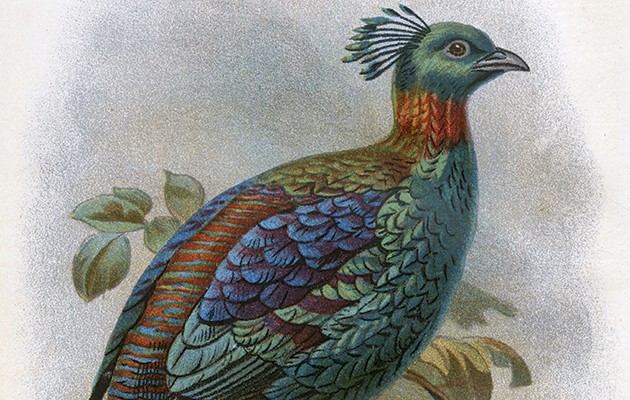Also known as the Himalayan monal, the Impeyan pheasant is the national bird of Nepal. They are threatened by poaching and their habitat is declining due to human activity
The Impeyan pheasant, also known as the Himalayan monal, is far bigger than other pheasants, standing at more than 2ft tall. It also lives between 8,000-15,000ft, which is higher than any other pheasant.
For another pheasant that can be found in the Himalayas, read about the striking Satyr tragopan: the Crimson-horned pheasant.
IMPEYAN PHEASANT
The national bird of Nepal, the Impeyan pheasant, also known as the Himalayan monal, is quite unlike other pheasants with its heavy body shape and brilliant plumage of metallic greens, blues, blacks and purples. It is a big bird, standing more than 2ft tall and weighing more than 5lb.
It is a bird of the mountains, living between 8,000 and 15,000ft – higher than any other pheasant. It has a relatively wide distribution, being found in Afghanistan, Pakistan, Kashmir, India, Nepal, southern Tibet, China and Bhutan, although its range has been shrinking in recent years.
HRH The Duke of Edinburgh took part in what was probably the last ever Impeyan pheasant drive, organised by the Wali of Swat in Pakistan, when he visited in the Sixties. Two decades later the focus was on efforts to save the bird; it was the subject of a 1987 documentary, The Bird of Nine Colours, written and produced by Colin Willock.
The Impeyan pheasant is not specially endangered, although it is threatened by poaching – both for food and for its impressive crest feathers which have long been used to decorate hats, as a symbol of status and authority. The feathers are still used in the cap badges of the Chitral Scouts.
As with many of the pheasant family, its habitat is declining due to human activity. Hydroelectric schemes, for instance, cause disturbance as well as habitat loss. Breeders say it is a tough, hardy bird, easily kept by a beginner. The aviary must be big enough, how-ever (a minimum of 400sq ft is recommended) or you will soon discover that the heavy, powerful beak is designed for digging.





